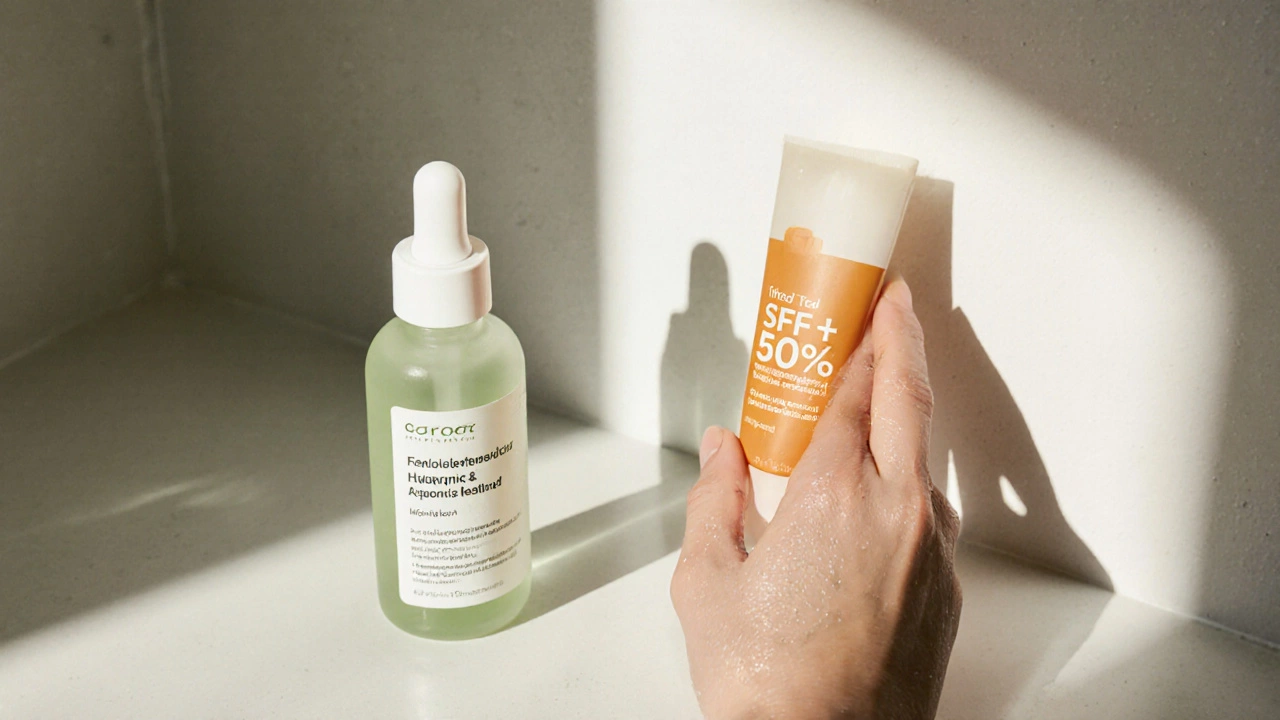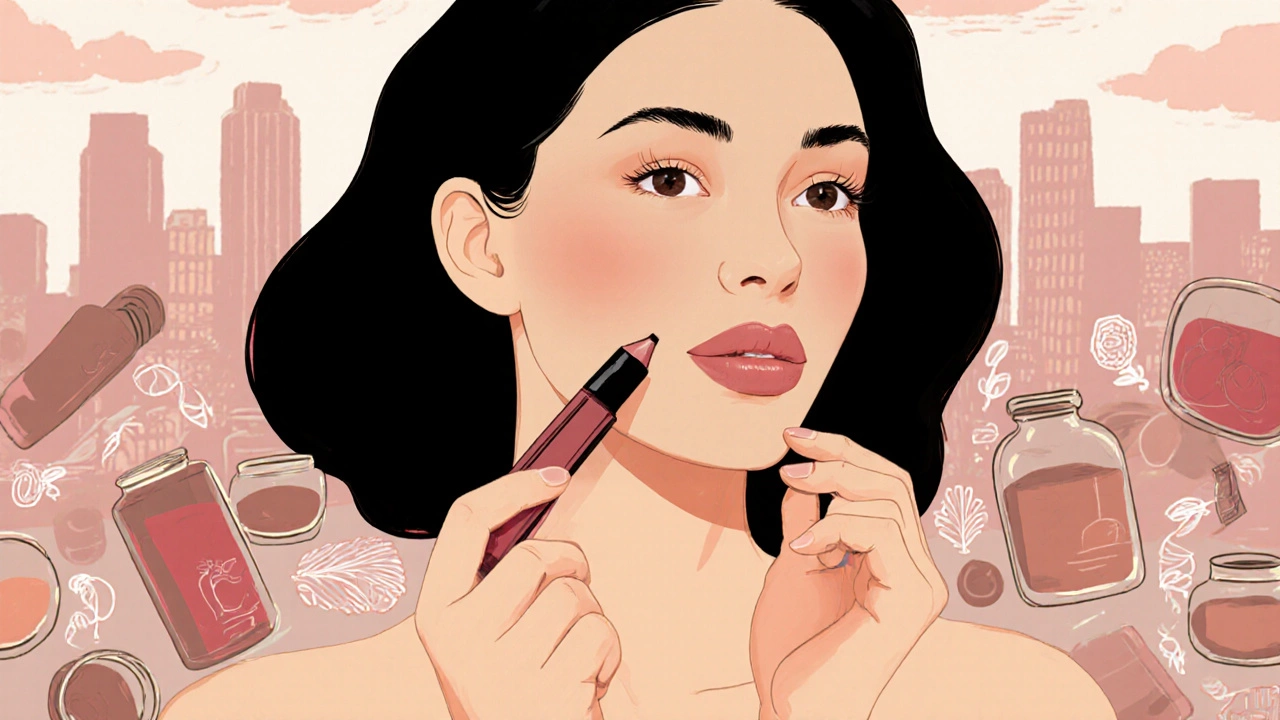What Beauty Products Are Most in Demand Right Now?
 Nov, 9 2025
Nov, 9 2025
Skincare Routine Builder
Step 1: Skin Type
Select your primary skin type
Step 2: Primary Concern
Select your main skincare concern
Step 3: Sustainability
How important is eco-friendly packaging to you?
Every year, the beauty market shifts. What was hot last season fades, and something new takes over-often faster than you can say "clean beauty." If you’re wondering what’s actually selling right now, it’s not just about flashy packaging or celebrity endorsements. Real demand comes from results, transparency, and simplicity. In 2025, people aren’t buying more products-they’re buying fewer, better ones that actually work.
Hydrating Serums with Hyaluronic Acid and Niacinamide
Forget thick creams that sit on your skin like a mask. The most requested product category right now is lightweight, multi-tasking serums. Hyaluronic acid isn’t new, but its pairing with niacinamide has become the gold standard. Brands like The Ordinary, Paula’s Choice, and K-beauty labels like COSRX and Beauty of Joseon are dominating sales because they deliver visible hydration without stickiness or irritation.
Why this combo? Hyaluronic acid pulls moisture into the skin. Niacinamide strengthens the barrier, reduces redness, and helps regulate oil. Together, they fix two problems at once: dryness and shine. A 2024 survey by SkinScience Lab found that 68% of users reported improved skin texture within two weeks of using this duo daily. That’s why it’s on nearly every best-seller list-from Sephora to Amazon.
SPF 50+ Daily Sunscreens That Don’t Leave a White Cast
Sunscreen is no longer an optional step. It’s the most bought skincare product globally in 2025. But here’s the catch: people still hate how most sunscreens feel. The ones selling best now are those that disappear into the skin. Mineral sunscreens with iron oxides and tinted formulas are winning. Brands like Supergoop! Unseen Sunscreen, EltaMD UV Clear, and New Zealand’s own Little Dove have cracked the code.
These products use micronized zinc oxide and innovative textures-think gel-creams or silicone-based films-that blend seamlessly into all skin tones. In Wellington, where UV levels are high even on cloudy days, demand for daily SPF has jumped 40% since 2023. People aren’t waiting for beach season anymore. They’re slathering it on before coffee.
Multi-Use Lip and Cheek Tints
Why buy three products when one does it all? Creamy, buildable lip and cheek tints are exploding in popularity. Think of them as liquid stains that blend like a second skin. Glossier’s Cloud Paint, Rare Beauty’s Soft Pinch Tint, and indie brands like Herbivore Botanicals and Lush’s new Lip & Cheek Bars are flying off shelves.
These aren’t your grandma’s blush. They’re pigmented but sheer, with nourishing oils like jojoba or squalane built in. They work for quick mornings, post-gym looks, and even as a no-makeup makeup base. A 2025 beauty retail report showed that 52% of women under 35 now own at least one multi-use tint-and buy a second one as a gift. Convenience and minimalism are driving this trend more than color trends.
Retinol Alternatives: Bakuchiol and Ferulic Acid
Retinol still works. But too many people experience peeling, redness, and sensitivity. That’s why bakuchiol-extracted from the babchi plant-is now the top-selling alternative. It’s not a fake retinol. It’s a gentler, plant-based option that boosts collagen, fades dark spots, and smooths fine lines without irritation.
Brands like Herbivore, Youth to the People, and The Inkey List have launched bakuchiol serums that outperform many retinol products in user satisfaction scores. Ferulic acid, often paired with vitamin C, is also trending for its antioxidant power. It protects skin from pollution and blue light, which matters more now that we’re glued to screens all day. In a 2025 clinical study by the Journal of Clinical Dermatology, bakuchiol showed comparable wrinkle reduction to 0.5% retinol-with zero flaking.

Scalp Serums and Hair Growth Oils
It’s not just about longer hair anymore. People want a healthier scalp. That’s why scalp serums are the fastest-growing segment in beauty. Products like The Ordinary’s Multi-Peptide Serum for Hair Density and Vegamour’s GRO Scalp Serum contain caffeine, niacinamide, and red clover extract-ingredients proven to stimulate follicles and reduce shedding.
Traditional hair oils like castor and argan are still popular, but now they’re being reformulated with targeted actives. Brands like Briogeo and Olaplex have launched leave-in scalp treatments that double as overnight treatments. Sales of scalp-focused products rose 63% in the last year. It’s no longer just about fixing breakage-it’s about prevention, and people are willing to pay for it.
Blue Light Protection Skincare
Blue light from phones, laptops, and LED screens is now a recognized skin stressor. While it won’t give you sunburn, studies show it can trigger oxidative stress, leading to premature aging and hyperpigmentation. That’s why products with antioxidants like vitamin C, ferulic acid, and lutein are in high demand.
Moisturizers with blue light defense claims are selling out. Brands like Tatcha, Dr. Dennis Gross, and even drugstore favorites like CeraVe have added these ingredients into their daily creams. A 2025 consumer survey found that 41% of people aged 18-35 now check product labels for blue light protection-up from 12% just two years ago. It’s not a gimmick. It’s a real concern for digital natives.
Refillable and Zero-Waste Packaging
People aren’t just buying better products-they’re demanding better packaging. Refillable compacts, glass bottles with return programs, and compostable tubes are no longer niche. They’re mainstream. Lush’s naked products, Fenty Beauty’s refillable foundations, and Kjaer Weis’s luxury metal compacts are leading the charge.
A 2025 Nielsen report found that 76% of consumers say they’ll pay more for sustainable packaging. In New Zealand, where recycling rates are high and environmental awareness is strong, this trend is accelerating. Brands that still use single-use plastic are losing shelf space. It’s not just ethical-it’s practical. Refills cost 30% less than buying new containers.

What’s Not Selling Anymore?
Not all trends last. Products that are fading fast include:
- Heavy, glitter-heavy highlighters (replaced by dewy, skin-like glow)
- Single-ingredient oils without added actives (too basic)
- Overpriced "miracle" creams with 50+ ingredients (consumers want transparency, not clutter)
- Non-tinted, white-cast sunscreens (too unappealing to use daily)
- Chemical peels sold in drugstore kits (people now prefer professional-grade but gentle alternatives)
What’s clear? People are tired of noise. They want clean formulas, proven ingredients, and products that fit into real lives-not Instagram fantasies.
How to Choose What’s Right for You
Don’t buy what’s trending-buy what matches your skin’s needs. Ask yourself:
- Do I have dryness, oiliness, or sensitivity?
- Am I more worried about aging, redness, or dullness?
- Do I need something fast for mornings, or am I willing to layer for results?
- Is sustainability important to me?
Start with one hero product-a hydrating serum or SPF-and build from there. You don’t need 10 steps. You need two or three that actually work.
What beauty products are selling the most right now?
The top-selling beauty products in 2025 are hydrating serums with hyaluronic acid and niacinamide, tinted SPF 50+ sunscreens that blend into skin, multi-use lip and cheek tints, bakuchiol-based anti-aging serums, scalp growth treatments, and blue light protection moisturizers. Refillable packaging is also a major driver of purchases.
Is retinol still popular, or are people switching to alternatives?
Retinol is still used, but many people are switching to bakuchiol because it gives similar anti-aging results without irritation. Bakuchiol is plant-based, works well with sensitive skin, and doesn’t cause peeling. Clinical studies show it’s just as effective as low-dose retinol for reducing fine lines.
Why are people buying more SPF every day now?
Because daily sun exposure-even indoors or on cloudy days-adds up. Modern sunscreens are lighter, invisible on skin, and often include antioxidants to fight pollution and blue light. People realize prevention is easier than correction, so they’re making SPF a non-negotiable step.
Are natural or organic beauty products in demand?
Not exactly. People care more about clean, transparent formulas than the label "organic." They want products free from parabens, sulfates, and synthetic fragrances. Many "natural" brands still use fillers. The real trend is efficacy + safety-not just plant-based claims.
What should I avoid when buying beauty products in 2025?
Avoid products with more than 20 ingredients unless they’re backed by science. Skip glitter highlighters, heavy creams that don’t absorb, and anything that promises "miracle" results overnight. Also avoid single-use plastic packaging unless the brand has a clear recycling program.
Next Steps: Build Your Minimalist Routine
Start simple. Pick one product from the most in-demand categories that matches your biggest concern:
- Dry skin? Try a hyaluronic acid + niacinamide serum.
- Worried about aging? Go for bakuchiol.
- Shedding hair? Try a caffeine scalp serum.
- Always tired? Add a blue light defense moisturizer.
Use it for 4 weeks. If you see a difference, add one more. That’s it. You don’t need a 10-step routine. You need consistency-and the right ingredients.
